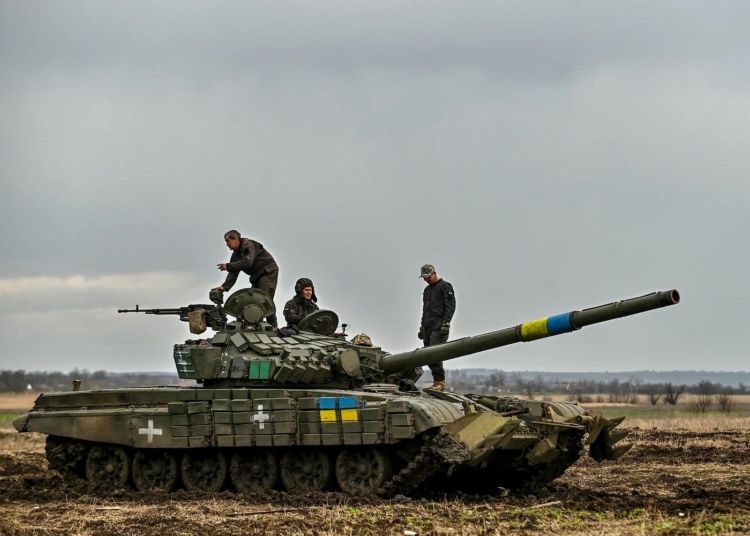This content explores the evolution of tanks from World War I to modern warfare. Tanks have played a crucial role in warfare, revolutionizing ground combat and changing the course of battles. The article discusses the birth of tanks during World War I, the rise of medium tanks in the interwar period, the advancements in tank technology during World War II, the age of heavy tanks during the Cold War, and the technological advancements of modern tanks. From their humble beginnings to their technologically advanced features today, tanks have greatly influenced the outcome of battles and wars, shaping the face of warfare.
The Evolution of Tanks: From World War I to Modern Warfare
Introduction
Tanks have played a crucial role in the history of warfare, revolutionizing ground combat and changing the course of battles. Over the years, these armored vehicles have gone through significant transformations, adapting to the ever-changing needs of warfare. From their humble beginnings in World War I to the highly advanced technology of modern tanks, this article explores the fascinating evolution of these war machines.
World War I – The Birth of Tanks
During the First World War, the trenches and static warfare called for a new approach to combat. To overcome the stalemate, engineers began developing an armored vehicle capable of crossing the treacherous No Man’s Land. In 1916, the British unveiled the Mark I tank, which became the first operational tank in history.
The Mark I boasted a top speed of five miles per hour and was armed with both machine guns and cannons. Though far from perfect, this crude machine laid the foundation for future tank designs. It featured tracks that allowed it to traverse difficult terrain, had a heavily armored hull to protect the crew, and used sponsons to mount weaponry.
Interwar Period – The Rise of Medium Tanks
After World War I, nations recognized the potential of tanks in future conflicts. During the interwar period, design improvements were made to increase speed, range, and firepower. Medium tanks emerged as a new class of armored vehicles, striking a balance between mobility and protection.
Notable tanks from this era include the British Vickers Medium Mark II and the Soviet T-34. The Vickers Medium Mark II introduced sloped armor, which increased the tank’s defensive capabilities by deflecting incoming projectiles. The T-34, on the other hand, utilized a revolutionary suspension system and showcased impressive mobility and firepower.
World War II – The Golden Age of Tanks
World War II marked the era of the most significant advancements in tank technology. Armies on all fronts relied heavily on tanks to gain superiority on the battlefield. Tank designs evolved rapidly, with each side trying to outdo the other in terms of firepower, armor, and speed.
The German Tiger II, renowned for its thick armor and powerful 88mm gun, struck fear into the hearts of Allied tank crews. On the other side, the Soviet Union’s T-34/85 proved to be a game-changer, combining mobility, protection, and a potent 85mm gun.
The Sherman tank, used by the United States, was easier and cheaper to produce in large numbers, becoming the workhorse of the Allied forces. However, it lacked the armor and firepower of its German counterparts.
The Cold War – The Age of Heavy Tanks
Following World War II, the Cold War pitted nations against each other in an arms race. Tanks became larger, heavier, and more heavily armed. The United States developed the M48 and later the M60 tanks, which were equipped with powerful 105mm guns.
The Soviet Union responded with their renowned T-54 and T-55 tanks, featuring an auto-loading system that gave them a superior rate of fire. These tanks were also equipped with composite armor, making them highly resistant to enemy fire.
Modern Warfare – Technological Advancements
With the advent of the digital age, tanks have evolved beyond recognition. Modern tanks feature advanced technologies, enabling them to perform a wide range of tasks on the battlefield. They incorporate composite armor, reactive armor, and active protection systems to increase their survivability and protect against the latest anti-tank threats.
The introduction of unmanned ground vehicles (UGVs) and remotely operated tanks has further enhanced battlefield capabilities. These unmanned vehicles can execute hazardous missions without risking human lives, gathering intelligence, and providing supporting fire.
Conclusion
From their inception during World War I to the technologically advanced machines of modern warfare, tanks have come a long way. They have revolutionized ground combat, playing a pivotal role in shaping the outcome of battles and wars. The evolution of tanks reflects mankind’s constant quest for dominance and superiority on the battlefield, forever changing the face of warfare.












